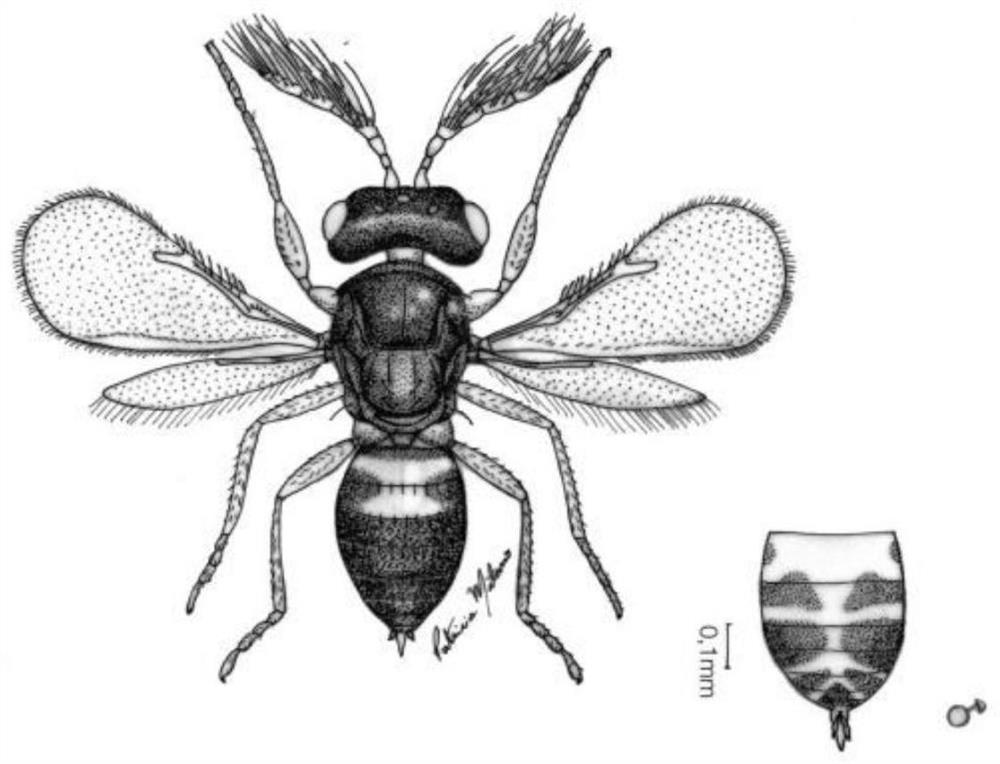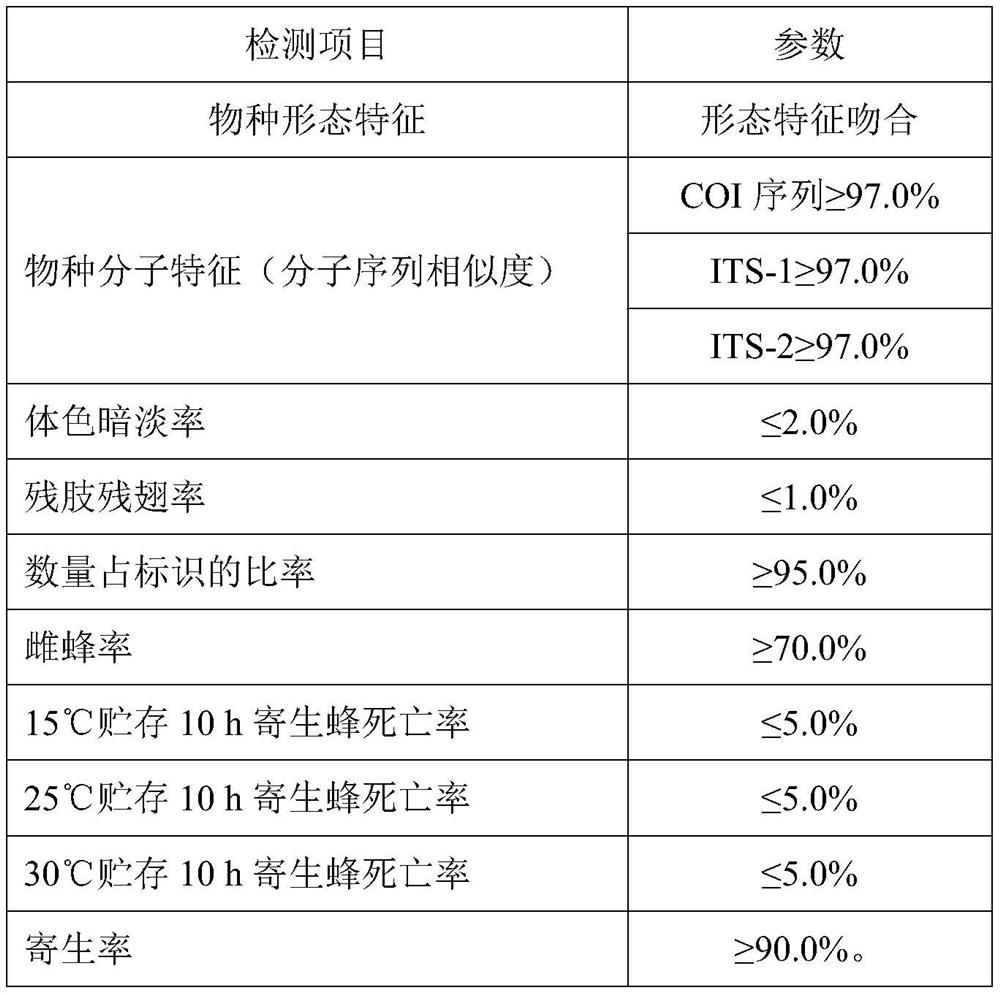Method for detecting and evaluating quality of adult tamarixia radiata
A technology of wasps and wasps, which is applied in the field of quality detection and evaluation of adult wasps of bright bellies, can solve problems such as differences in parasitism rates, achieve the effects of controlling population numbers, promoting commercialization, and ensuring the quality and safety of agricultural products and the safety of the ecological environment
- Summary
- Abstract
- Description
- Claims
- Application Information
AI Technical Summary
Problems solved by technology
Method used
Image
Examples
Embodiment 1
[0019] Embodiment 1 Identification of species morphological characteristics
[0020] Morphological identification should be carried out first to evaluate the product quality of B. japonica, so as to ensure that the morphological characteristics of the species are consistent with the detection results. In this paper, 5 bottles of B. japonica were randomly selected, and 10 of them (5 females and 5 males) were selected from each bottle for species identification. The identification results are as follows:
[0021] (1) female bee ( figure 1 ):
[0022] Body length 0.92 ~ 1.04mm, most of them are dark brown, compound eyes and monocular reddish brown, head wider than long, 2 teeth and 1 pick on the upper jaw, 1 segment of mandibular palp and lower lip palp. Antennae 8-segmented (antennary type 1, 1, 3, 3), with 1 small annular segment; the length of the stalk is 3.7 times the width; the pedicel is equal to or slightly longer than the first cord; the length of the first to third c...
Embodiment 2
[0027] Example 2 Molecular Characterization of Species
[0028] The conserved region of cytochrome oxidase subunit I (COI) and internal transcribed spacer 1, 2 (internal transcribed spacer, ITS-1, ITS-2) were used for molecular identification of species.
[0029] Randomly select 5 vials of Bright-bellied Glazed Bee, and extract 1 head from each vial for total DNA extraction. The kit uses Tiangen Bio-Blood / Cell / Tissue Genomic DNA Extraction Kit (DP304), and the experimental steps strictly follow the kit instructions. The upstream and downstream primers are listed in Table 1.
[0030] Table 1
[0031]
[0032] Use 50 μL system for PCR reaction, 2 μL DNA template, 0.5 μM each primer (Table 1), 25 μL Mix (2X SanTaq PCRMix master mix, containing blue dye, Sangon Biotech B532061), supplemented with sterile water. Reaction conditions: pre-denaturation at 94°C (5min) → denaturation at 94°C (30s) → annealing at 50-60°C (30s) → extension at 72°C (30-60s) → extension at 72°C (10min)...
Embodiment 3
[0036] Example 3 Female bee body color and disability detection
[0037] Use a stereo microscope to observe whether the body color of the female bright-bellied wasps is dim, and whether there are residual wings and limbs. Randomly select 10 bottles of bright-bellied wasps, every two bottles are 1 sample, take 200 female bright-bellied wasps for each sample, record the number of female bees with dark body color and residual wings and limbs, and count the dark body color and the ratio of the number of individuals with residual limbs and residual wings to the total number (body color dim rate and residual limb residual wing rate), a total of 5 tests were performed, and the test results are shown in Table 3.
[0038] table 3
[0039] Test items(%) 1 2 3 4 5 average body color dimming rate 1.0 1.5 0.5 1.0 1.5 1.1±0.2 Remnant Limb Remnant Wing Rate 0.2 0.4 0.4 0.4 0.4 0.36±0.4
[0040]It can be seen from Table 3 that in the 5 times of app...
PUM
 Login to View More
Login to View More Abstract
Description
Claims
Application Information
 Login to View More
Login to View More - R&D Engineer
- R&D Manager
- IP Professional
- Industry Leading Data Capabilities
- Powerful AI technology
- Patent DNA Extraction
Browse by: Latest US Patents, China's latest patents, Technical Efficacy Thesaurus, Application Domain, Technology Topic, Popular Technical Reports.
© 2024 PatSnap. All rights reserved.Legal|Privacy policy|Modern Slavery Act Transparency Statement|Sitemap|About US| Contact US: help@patsnap.com










